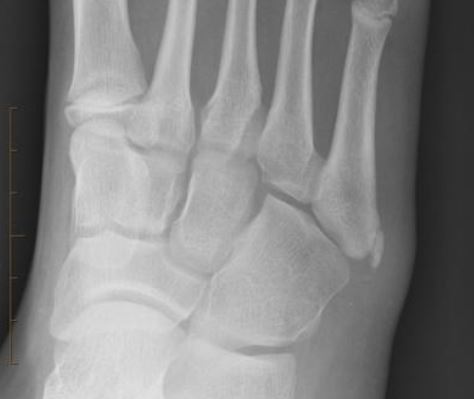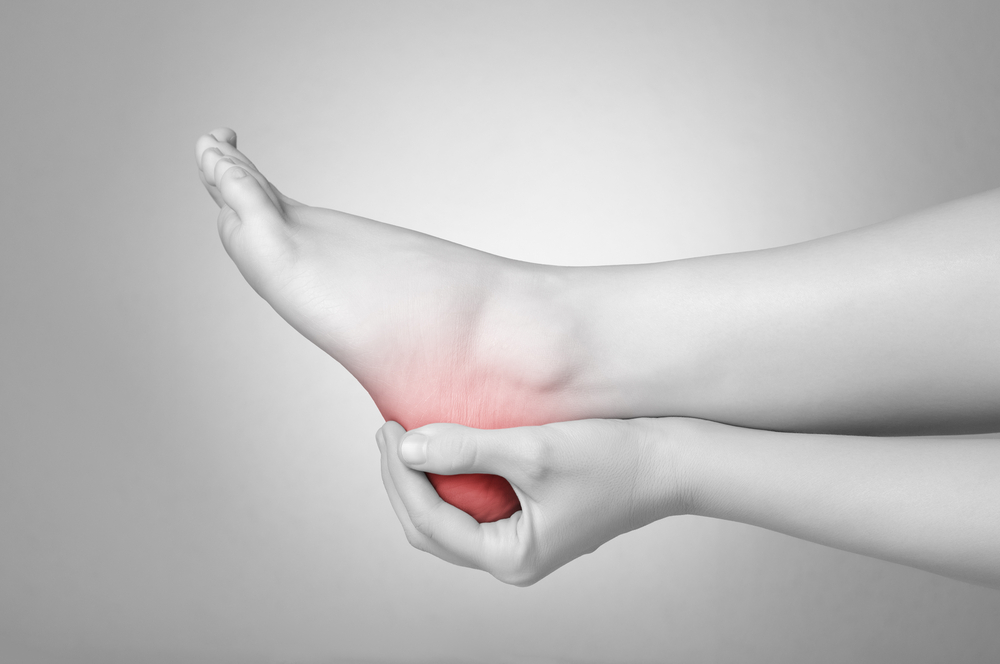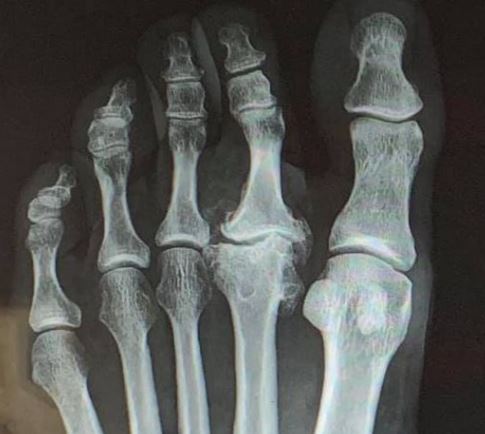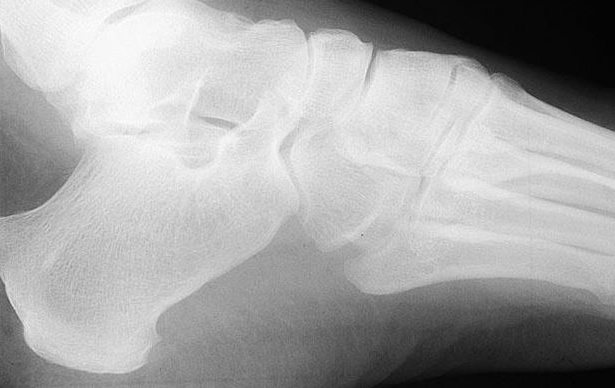Iselin’s disease is an uncommon osteochondrosis or traction apophysitis of the growing area at the base of the fifth metatarsal bone. This is where the peroneus brevis tendon attaches. It is named after the German physician, Dr Hans Iselin who first described it in 1912.
The apophysis at the base of the fifth metatarsal is a growing area for the bone which appears around ages 10-12 years, so Iselin’s tends to be more common just after that age and is almost always associated with higher levels of sports activity. The higher loads associated with sport put a lot of force on the growing area increasing the risk of on overuse injury. Typically there is no single incident of trauma that occurs.
Symptoms of Iselin’s Disease
The typical symptoms of Iselin’s disease include pain on the outer side of the foot, particularly near the base of the fifth metatarsal bone with some swelling and tenderness in the affected area. The pain is worse with weight-bearing activities or walking and may cause a limp.
On x-ray you can usually see some fragmentation and irregularity with cystic changes around the apophysis. There may be a widening of the apophysis.
Iselin’s disease should not to be confused with: Jones fracture (fifth metatarsal fracture); fifth metatarsal stress fracture; cuboid syndrome; symptomatic os vesalianum (extra accessory bone).
Treatment of Iselin’s Disease
The treatment of Iselin’s disease starts with a limitation in activity levels down to what can be tolerated. Ice may be needed after activity if the pain is bad enough. Total rest may be needed if an initial restriction in activity levels is not helping.
Strapping and foot orthotic designs as well as supportive footwear may be helpful to rest the area. A walking brace or CAM boot immobilization may also be needed for up to 2-4 weeks.
As the symptoms decrease the amount of support given to the foot can be slowly decreased and the activity levels can be slowly and gradually increased. If this is not done carefully, the symptoms may return.
Regardless of how the treatments work, Iselin’s diseases does resolve spontaneously as apophysis or growing area fuses to the main body of the bone as the skeleton matures.
In extremely rare cases, the small growth plate is surgically excised.
Forum discussions on Iselin’s Disease
Author:
University lecturer, runner, cynic, researcher, skeptic, forum admin, woo basher, clinician, rabble-rouser, blogger, dad.



